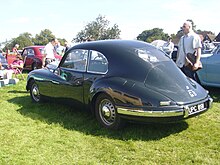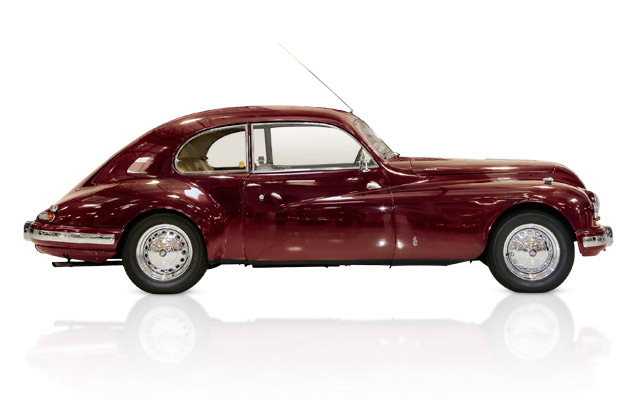Bristol 403
Bristol 403 The exterior mirror was attached later.
The Bristol 403 was a sports car of the British car manufacturer Bristol Aircraft Company (later: Bristol Cars ), in 1953 the very similarly designed Bristol 401 replaced.
History of development
The 403 differed from its predecessor by a number of technical changes, the British trade press, " from an already excellent car a unique made ."
The most significant technical innovation was the introduction of a more powerful engine. The Bristol 403 is a 100A -called version of the famous six-cylinder engine, which gave now a power output of 100 hp. This increase in output was the maximum speed of 403 to over 100 miles per hour ( 160 km / h) increase. At the same time, the pulling power of the engine in the middle speed range increased noticeably from 2500 revolutions per minute. Other changes included the introduction of new, stronger brakes with a diameter of 28 cm, which took into account the higher final speed of the car. At the same time been perceived as significantly effort, most of which was when the brake pedal was reduced. Changes to the front suspension finally eliminated the criticized the tendency to oversteer 401.
The aerodynamically sophisticated body of the 401, however, remained largely unchanged. The few external changes related to new lighting units and modified emblems. The split windscreen remained intact. Two vehicles were subsequently at the customer a one-piece windshield, which was taken from the Morris Minor at least in one case. Apart from a single, externally produced Cabriolet, which differed in the rear area of the factory even 402, no special bodies for the Bristol 403 were produced.
The 403 was the last car of Bristol, carrying the BMW " kidney" radiator grille. It was produced in 300 copies.









